The best-selling Honda
Honda has a knack for coming up with big-selling models, as witnessed by its Civic being the best-selling name plate on four wheels. However, even the Civic’s numbers pale into insignificance next to Honda’s real star of the sales chart – the Cub. Not only is this modest two-wheeler the company’s highest rating sales model, but it’s also the most produced vehicle in the world, ever. It puts the Volkswagens Beetle and Golf, Toyota Corolla, Mini et al in the shade.
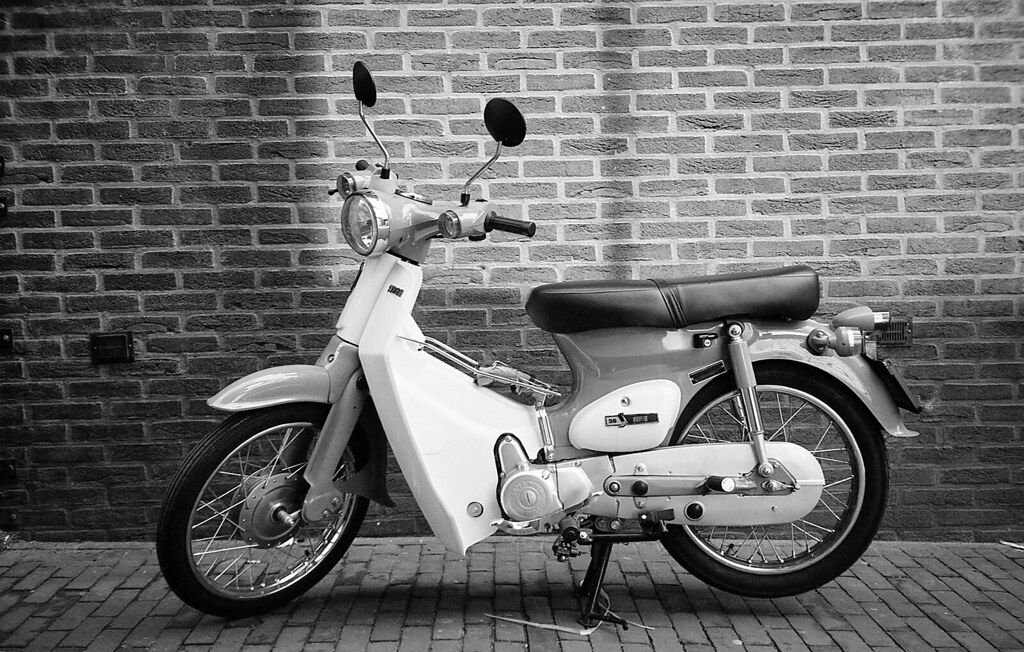
It helps that the Honda Cub has been in continuous production since 1958 in a form that’s not changed a great deal other than to offer a variety of different engine capacities. In almost every other respect, the Cub has puttered on its way to vast sales that topped 100 million in 2017 and it’s still going strong today as both a brand new motorcycle and as a cult classic moped.
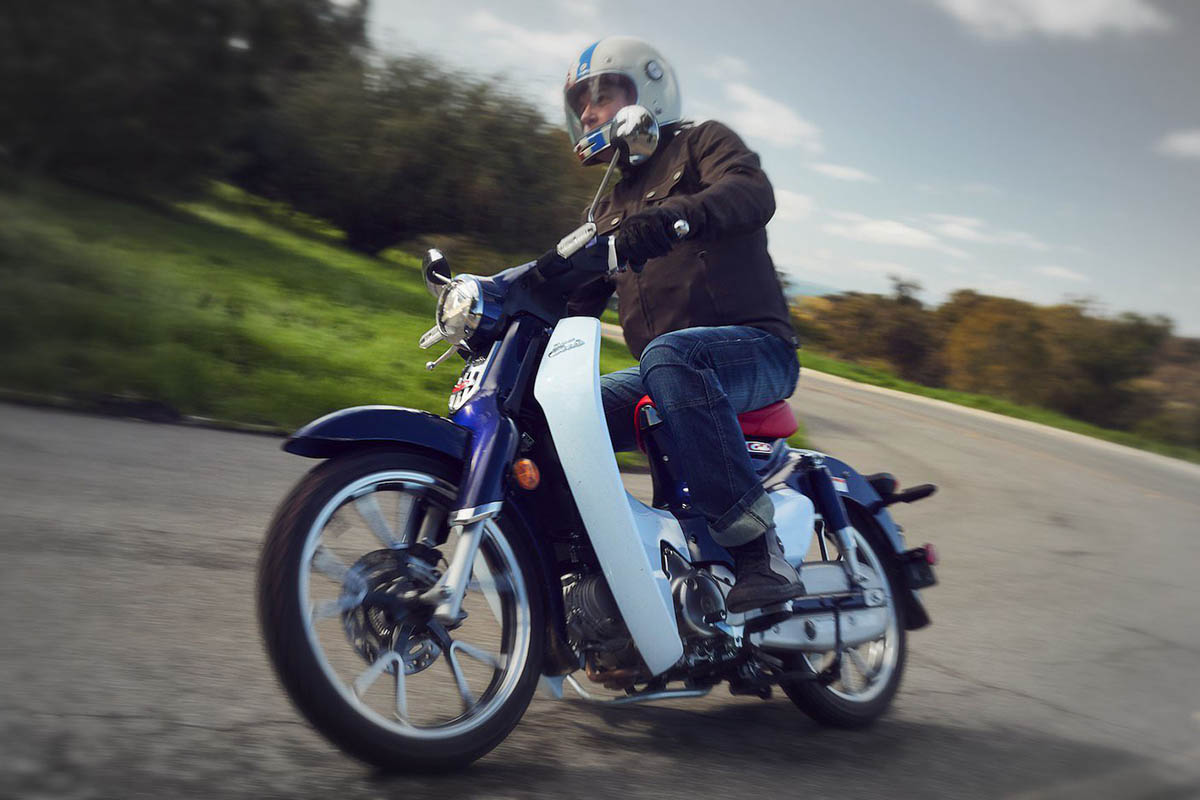
The idea for the Cub was not some Eureka moment for company boss Soichiro Honda and his close ally Takeo Fujisawa. During a trip to Europe in 1956, the pair saw the rapid expansion in sales of mopeds and scooters, helped along by the Suez Crisis that ramped up the price of fuel and sparked a rush for more economical vehicles. The same circumstances led to a rash of bubble cars and economy vehicles of varying ability and quality.
Seeing that most of the answers to this set of problems were, simply put, rubbish, Honda applied his usual engineering nous to come up with something altogether more elegant and capable. The Cub is built around a simple frame that is easy and cheap to produce and everything hangs off this, so no need for complex subframes or extra assemblies. Low cost was baked into Honda’s design from the get-go, which appealed to Fujisawa who was in charge of the company purse strings.
To complement the basic but robust frame design, Honda needed an equally clever yet straightforward engine and transmission. Rather than opt for the basic and cheap two-stroke motors preferred by most scooter manufacturers, Honda chose a four-stoke single-cylinder engine. While a four-stroke was a little more complicated to build and less powerful for the same given engine capacity, it was much more reliable and less labour intensive to maintain. These factors were much more appealing to Honda and Fujisawa, even though they also billed their new scooter as a sporty moped when it was launched. Given the competition at the time, this wasn’t such an outlandish claim, though few riders would ever buy a Cub thinking they were getting something at the peak of performance and handling.
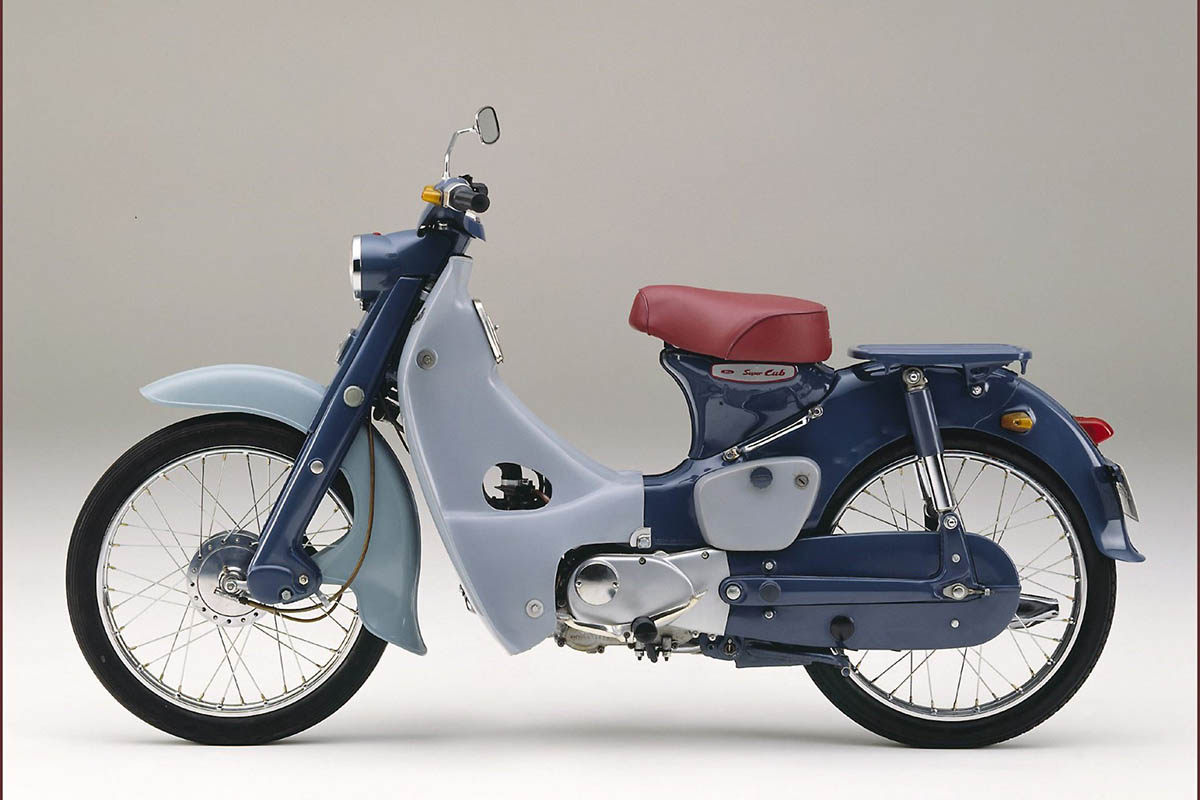
A large part of the clever design of the Cub was placing the engine horizontally in line within the frame. It put the weight low in the chassis for decent handling, but it also allowed the motor to be enclosed by the bodywork of the Cub. This separated the engine from the rider and pillion, as well as keeping the worst of bad weather away from their legs. All of that makes the Cub more appealing for anyone wanting to use the moped as an all-year commuter rather than just something to get about in the summer.
Yet more intelligent design applied to the Cub included its 17-inch wheels, which were considerably bigger than most mopeds and scooters of the time that ran in 10- to 12-inch wheels. The Honda’s bigger diameter wheels made for a smoother, more stable ride on poorly surfaced roads, which were par for the course in most markets that Honda would sell its new bike.
Other astute design decisions implemented right from the start were the engine’s low compression that meant it could run on low octane fuel. This allowed the Cub to work in a far wider spread of markets without the need for separate engine tunes. It also came with a simple manual gearbox that didn’t need the rider to work a clutch – a centrifugal clutch did the honours of smoothing out changes. Again, this made the bike easier to ride by those who might not have owned a powered vehicle before.
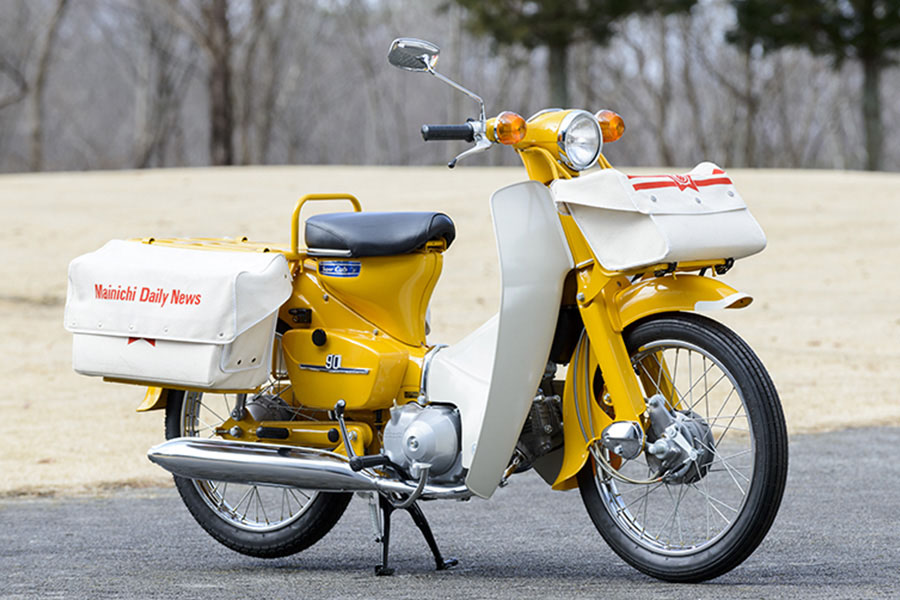
When the Cub went on sale in 1958, it was a solid success, though not a runaway one. Instead, it gained popularity around the world and just kept on selling. This included in the US, where it quickly gained popularity based on a slick advertising campaign. The same selling tactic worked elsewhere and the Cub played its part in putting the British motorcycle industry into terminal decline in the 1960s and ’70s.
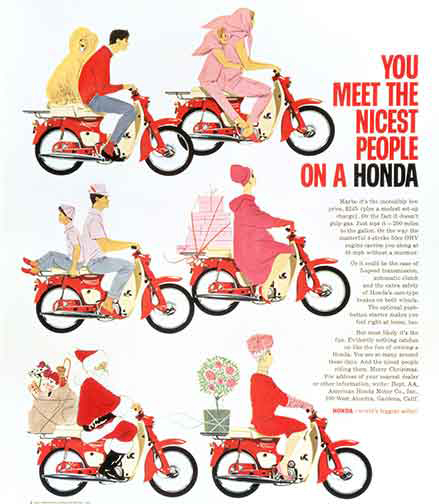
Another reason for the Cub’s ongoing sales march was it appealed to such a broad spread of buyers. Aside from the expected buyers looking for fuel-efficient transport, the Cub was adopted by a new generation of young buyers who reckoned it had a bit of West Coast surfer chic, and that helped draw in female buyers who might not have bought any of the Honda’s rivals. Then there were the millions of people who needed something that was almost indestructible, which opened up large swathes of eager buyers in emerging markets around the developing world to Honda, as well as many clones of the Cub that could at best be described as mechanical flattery.
While sales of the Cub have slowed a little in later years, it is still going strong and Honda introduced a 60th anniversary model in 2018 to celebrate the model’s continuing success. It has also become a legend in its own production lifetime as enthusiasts carry on using it for what it was originally intended, as well as many other uses it wasn’t. Cubs have traversed the globe, been off-road, raced for 24 hours and more, and been ridden to all points of the world. It’s now a much-loved classic bike and you’ll often find one sitting alongside many more exotic bikes in collections as recognition of its importance in the history of transport and many personal riding careers that started on a Cub.
Perhaps you own your own Cub or have a story to tell about one, we'd love to hear from you in the comments below.

COMMENT